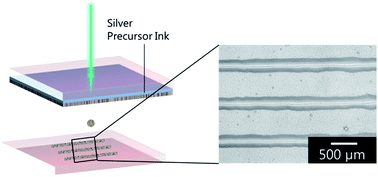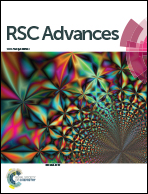Laser-induced forward transfer of high-viscosity silver precursor ink for non-contact printed electronics
Abstract
Non-contact printing techniques are receiving increasing interest in the field of printed electronics, because they can be used to pattern various inks on arbitrary substrates without applying mechanical pressure or damaging pre-patterned components. The ink-jet process is frequently used for non-contact printing of various conductive inks. However, the ink-jet printing process is restricted by the viscosity of the ink, because the nozzle can become clogged by high-viscosity inks. Here we successfully demonstrate a non-contact printing technique for high-viscosity and high-concentration silver precursor inks using the laser-induced forward transfer (LIFT) process. The process conditions for LIFT printing, including the triazene polymer sacrificial layer thickness, the laser fluence, and the donor–acceptor distance, have been investigated in detail. LIFT printing of a hexylamine-based 70 wt% silver precursor ink with viscosity of 60 mPa s was achieved, and produced fine conductive lines with widths of 141 μm, thicknesses of 490 nm, and volume resistivity of 11.6 μΩ cm. It is envisaged that this non-contact printing method can pave the way towards non-contact and maskless printing of high viscosity inks in the manufacture of printed electronics.


 Please wait while we load your content...
Please wait while we load your content...